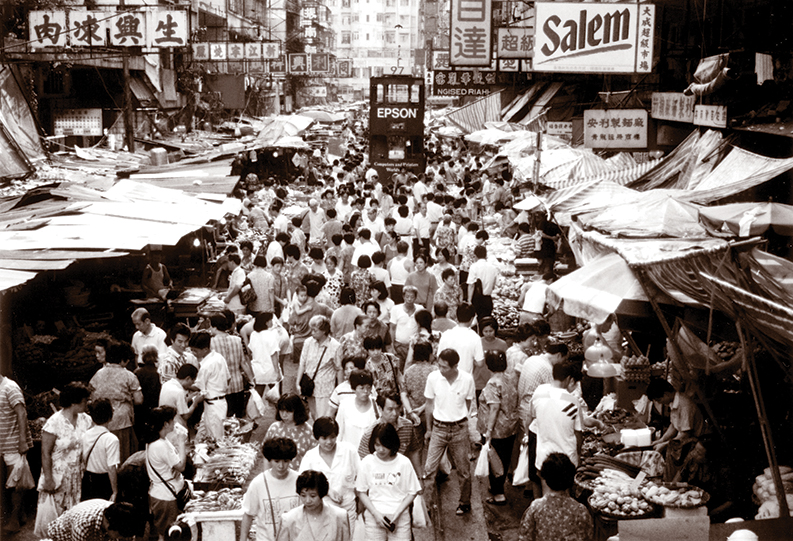2021年08月12日
In Chinese society, freshness and seasonality is part and parcel of the food culture. Hong Kong sprouted open-air markets as early as its establishment as a free port, when vendor stalls lined both sides of roads with a staggering variety of fresh daily produce ranging from meats and vegetables to fruits and other groceries. In addition to helping residents stock up on daily supplies, wet markets have always been social spaces; vendors and shoppers greet each other and chatter away, imbuing the markets with camaraderie and intimacy. Graham Street Market, built in the 1840s, is Hong Kong’s earliest wet market, followed by others in Wan Chai, Causeway Bay, North Point and elsewhere.
Unfortunately, these street markets created problems like poor hygiene and traffic congestion. In response, the government moved many of them into covered premises, such as the Central Market Building (erected in 1895 and rebuilt in 1939) and the Western Market Building (built in 1906). These moves were accelerated during the post-war period, and the government stopped issuing new hawker licences in the 1970s. Since the 1980s, the earlier single-purpose market buildings have evolved into municipal services buildings that also house public libraries, sports centres and cooked food centres. Markets have changed over time but one thing remains the same: the camaraderie that has lasted for more than a century.
Unfortunately, these street markets created problems like poor hygiene and traffic congestion. In response, the government moved many of them into covered premises, such as the Central Market Building (erected in 1895 and rebuilt in 1939) and the Western Market Building (built in 1906). These moves were accelerated during the post-war period, and the government stopped issuing new hawker licences in the 1970s. Since the 1980s, the earlier single-purpose market buildings have evolved into municipal services buildings that also house public libraries, sports centres and cooked food centres. Markets have changed over time but one thing remains the same: the camaraderie that has lasted for more than a century.
